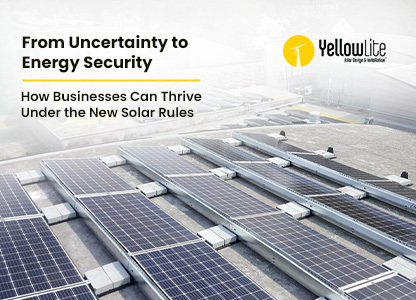If the past few years have taught us anything, it’s that energy security isn’t a luxury; it’s a necessity. From Ohio’s utility rate hikes to nationwide grid instability, homeowners are looking for more than just solar panels to take control of their energy future.
That’s where solar energy battery storage comes in. By pairing solar panels with battery storage, you can store the clean energy you produce and use it when you need it most, whether that’s during peak utility rates, at night, or when the power goes out.
Let’s break down why this combination is the ultimate power move in 2025 and how you can make the most of it.
Why Solar Energy Battery Storage Is a Game-Changer in 2025
Solar panels alone are powerful; they slash your electric bills, reduce your carbon footprint, and protect you from rising rates. But without a battery, any extra power your panels generate during the day goes straight back to the grid.
Solar energy storage captures and saves that excess power for later use. This means:
- You’re not dependent on the grid at night or during outages.
- You can avoid expensive peak-hour rates.
- You’re maximizing every watt your panels produce.
For homeowners in areas like Ohio, where both rate volatility and outages are becoming more common, solar + battery storage isn’t just an upgrade; it’s energy insurance.
What Is Solar Energy Battery Storage and How Does It Work?
Think of solar energy battery storage as your power bank for the entire house. Here’s how it works:
- Daytime – Solar panels generate electricity.
- Excess Power – Any electricity you don’t use immediately charges your battery.
- Evening/Night – When the sun's down, the stored energy powers your home.
- Outages – The battery kicks in automatically, keeping your essentials running.
Modern solar battery storage systems, like the Tesla Powerwall, come with intelligent monitoring to see how much power you’re generating, storing, and using, all in real time.
Understanding Solar Energy Battery Storage Capacity
Battery capacity is measured in kilowatt-hours (kWh), the amount of energy it can store.
- A small home might need 5–10 kWh for backup power.
- A medium to large home may require 13–20+ kWh for full-day coverage.
Your exact needs depend on:
- Daily electricity usage
- Whether you want a full backup or just the essentials powered
- How long do outages typically last in your area
Pro tip from YellowLite: Always size your system for both daily needs and emergency scenarios; you don’t want to run out of power when you need it most.
How Long Will a Solar Battery Last During a Power Outage?
The answer depends on your usage and battery size. For example:
- A 13.5 kWh Tesla Powerwall running only essentials (fridge, lights, Wi-Fi, a few outlets) could last 1–2 days without sunlight.
- A larger setup or multiple batteries could stretch that to 3–5 days.
During prolonged outages, your solar panels will recharge the battery each day, meaning you could, in theory, stay off-grid indefinitely.
How Much Does Solar Battery Storage Cost in 2025?
On average, solar energy storage systems cost $10,000–$20,000 installed. Prices vary based on:
- Battery brand and capacity
- Installation complexity
- Whether you’re adding storage to an existing solar system or installing both together
Tesla Powerwall: Features, Benefits, and Cost Analysis

The Tesla Powerwall is one of the most recognized names in residential battery storage, and for good reason:
Price of Powerwall in 2025
The price of Powerwall (including installation) is generally in the $18,000–$22,000 range, depending on your installer and system configuration. While it’s not the cheapest option, it’s one of the most reliable and integrates seamlessly with most solar systems.
Maximizing ROI: Solar Panels + Battery Storage Combo
When you pair solar panels with solar energy battery storage, you get:
- Peak-rate savings – Use stored energy when utility prices spike.
- Backup power – Stay comfortable during outages.
- Energy independence – Rely less on the grid.
YellowLite customers often see faster payback when storage helps them avoid peak rates or when they live in areas with high outage frequency.
Is Solar Energy Battery Storage Worth It Post-Bill Changes?
Even if certain incentives shift, solar energy battery storage remains a smart long-term investment. Here’s why:
- Federal tax credits still apply to many systems in 2025.
- State and utility rebates can cut thousands off your cost.
- Energy security has value that goes beyond dollars; it’s peace of mind.
Choosing the Right Solar Energy Storage System for Your Home
Before committing, ask:
- What’s my daily and peak energy usage?
- How often do I experience outages?
- What incentives can I apply for?
- Does my installer offer monitoring and maintenance support?
YellowLite Tip: Always work with a certified solar installer to ensure proper sizing, integration, and warranty protection.
Key Takeaway
The grid is becoming less reliable, utility rates are climbing, and demand for energy security is rising. Solar energy battery storage gives you the power to control your costs, keep the lights on, and make the most of your solar investment.
If you’re ready to explore your options, YellowLite offers $0 down installation and custom solar + storage solutions built for your home’s needs.
FAQs
1. What is the lifespan of a solar battery?
Most solar batteries last 10–15 years with proper maintenance.
2. How much is the price of Powerwall in 2025?
Expect $18000 to $22000 installed, depending on capacity and location.
3. Can I add solar energy storage to my existing system?
Yes, most modern batteries, including the Tesla Powerwall, can integrate with existing solar setups.
4. Is solar energy battery storage maintenance-intensive?
No, modern batteries are low-maintenance and come with warranties that cover most issues.
5. Will a battery run my entire home?
Yes, if sized correctly. You can also configure it to power just essential circuits to extend backup time.




